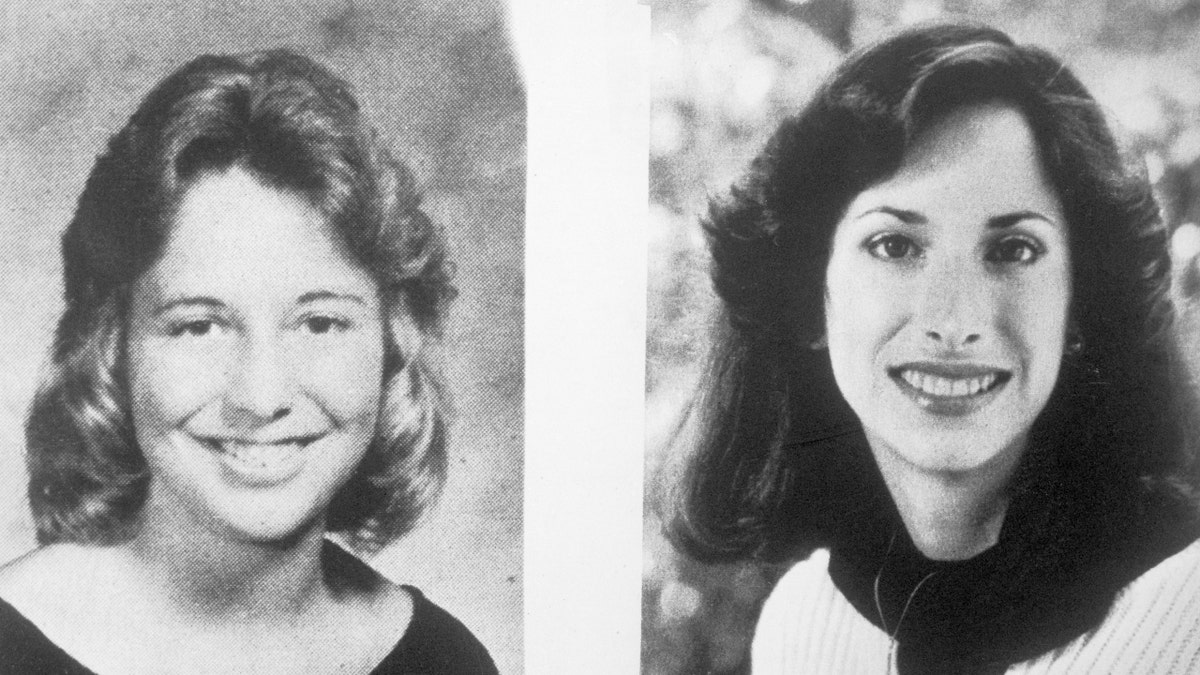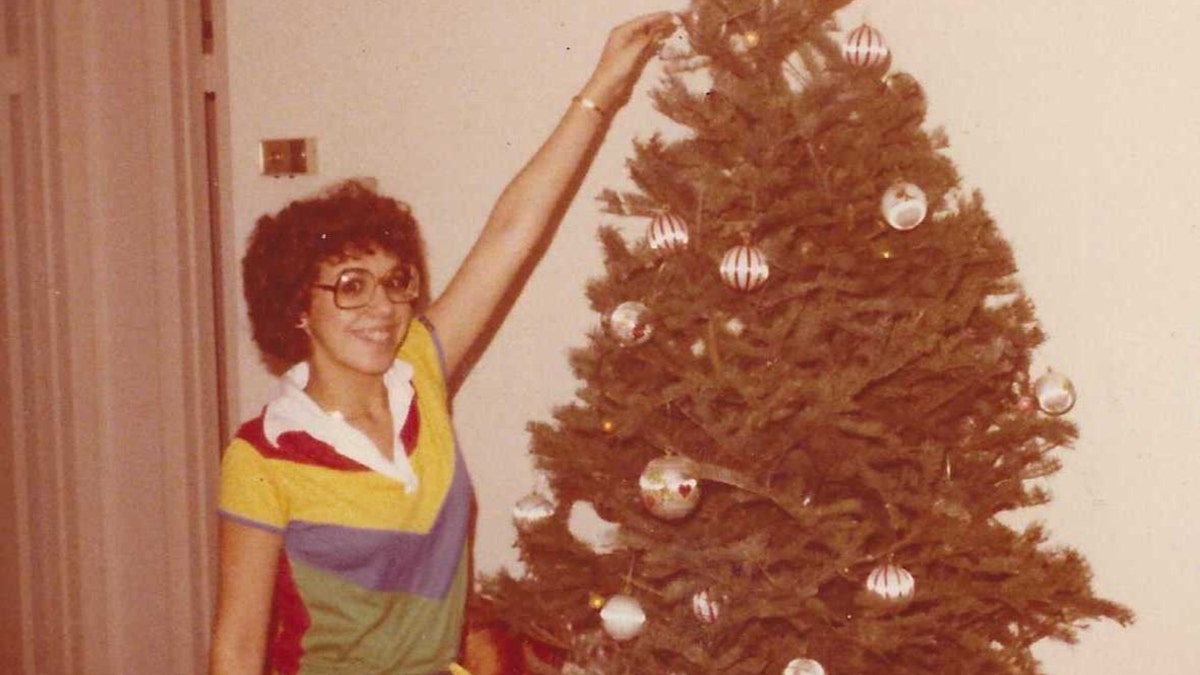Notorious serial killer Ted Bundy murdered at least 30 women between 1974 and 1976, and Kathy Kleiner Rubin was just seconds from becoming another victim.
Kleiner Rubin, now 65, narrowly escaped Bundy when he broke into Florida State University’s Chi Omega house and killed sorority sisters Lisa Levy and Margaret Bowman in their beds during the early morning hours of Jan. 15, 1978.
“Bundy gripped the oak log he had grabbed from the firewood pile by the back door. I saw him raise his left arm into the air. He slammed the log onto my face with tremendous force,” Kleiner Rubin — the only Bundy survivor to write a book — says in her memoir, “A Light in the Dark: Surviving More than Ted Bundy,” to be released on Oct. 3. “… My responses were primal. I wanted to scream for help, but I could not.”
“I didn’t yet know that both my jaw joints were broken and disconnected from my cheekbone. My chin was so badly smashed that it shattered, and my cheek had been ripped open as though I had been hit by a bullet,” she writes. “My teeth were still in my jaw, but the intense force of the blow had pushed my molars forward. They were like cars on the highway that had been rammed forward in a massive, multicar pileup.”
Kleiner Rubin, now 65, narrowly escaped Bundy when he broke into Florida State University’s Chi Omega house and killed sorority sisters Lisa Levy and Margaret Bowman in their beds during the early morning hours of Jan. 15, 1978. (Handout)
Kleiner Rubin nearly bit off her entire tongue due to the pressure of the log Bundy smashed against her head that evening while she lay asleep in bed. Then he walked over to the other side of Kleiner Rubin’s room and attacked her roommate, who also survived, the same way. He tripped over a trunk in the middle of their room several times while moving back and forth between the young women in their beds.
Kleiner Rubin and her roommate slept with the curtains open, allowing natural light to flood their room in the daytime.

Lisa Levy, 20, left, and Margaret Bowman, 21, were beaten to death and assaulted in their rooms at Florida State University on Jan. 15, 1978. (Getty Images)
That morning, around 3 a.m., as Bundy tried to kill them the same way he murdered Levy and Bowman, a Chi Omega member arrived home in a car. As the car pulled into the driveway of the sorority house, light burst through the roommates’ window. Bundy was spooked and ran out of the house.
When other members of the house eventually awoke and saw the nightmare before them, they called police. Paramedics at the scene took one look at Kleiner Rubin and told her she’d been shot in the face, but she couldn’t move her mouth to tell them otherwise, she writes in her book.

Paramedics at the scene took one look at Kleiner Rubin and told her she’d been shot in the face, but she couldn’t move her mouth to tell them otherwise, she writes in her book. (Handout)
Kleiner Rubin’s mother went to great lengths to hide news of Bundy from her daughter.
“I wasn’t able to broach the subject on my own given that my mouth was wired shut and my tongue was split nearly in two,” she writes. “The surgeon had decided to allow my tongue to heal naturally and said the tissue would renew itself over time. Until then, I had to experience the disgust of feeling that shredded muscle in my mouth.”

Kleiner Rubin’s mother went to great lengths to hide news of Bundy from her daughter. (Getty Images)
In an interview with Fox News Digital discussing her book at CrimeCon 2023, Kleiner Rubin said her memoir takes a different approach to Bundy, who has been depicted as a handsome and charming man no one would have suspected of being a serial killer.
“He was deviant. A creep.”
“He killed because he wanted to keep their souls,” she said. “He would have sex with the bodies afterward. He’d go and put makeup on the dead corpses. But then tomorrow, he could be a charming person. He was very manipulative. He wanted to be what he wanted to be when he wanted to.”

Kleiner Rubin said Bundy did not confront most of his victims because “he was a coward.” (Getty Images)
She added that Bundy did not confront most of his victims because “he was a coward.”
Kleiner Rubin also aims to shed more light on the victims and the lives they lived before they were so brutally taken from them.
“It’s been a long time coming.”
“It feels good because in the book I mention all the women, the dozens of women that he killed,” she said. “And that has been very important to me because usually there’s a paragraph with all our names written with commas. And that just wasn’t right. I was living, I had a life, and they had dreams and things they wanted to do.”
The title of Kleiner Rubin’s book stems from the fact that she survived not only a serial killer but her childhood battle with lupus, an armed bank robbery when she worked as a bank teller after college, breast cancer and even Hurricane Katrina when she lived in New Orleans with her husband in August 2005.

The title of Kleiner Rubin’s book stems from the fact that she survived not only a serial killer but her childhood battle with lupus, an armed bank robbery when she worked as a bank teller after college, breast cancer and even Hurricane Katrina. (Handout)
She credits her loving family — including her mother, father, stepfather and husband — and her tenacity with her ability to survive so many tragedies.
Kleiner Rubin would even go on to have a son after doctors told her that she would never have children due to her battle with lupus.
The author says she has not heard from her sorority sisters since the attack. She says part of the reason may be due to the fact that her mother told them not to contact her while she was in the hospital recovering, but her calls since then have gone unanswered.

Kleiner Rubin would even go on to have a son after doctors told her that she would never have children due to her battle with lupus. (Handout)
“It hurt a lot … and I thought I needed their reinforcement and for them to tell me … I didn’t do anything, and it just never happened,” she said. “It’s my life and that’s the way it’s been. I don’t need them now.”
Bundy was sentenced to death by the electric chair in a Florida prison in 1989. Kleiner Rubin said she was invited to watch but did not go.
“I had married months after Bundy was executed. I boxed up my memories, moved to a new state, and pushed forward with my life,” she writes in her memoir. “More than thirty women and girls never did the same. Bundy viciously cut their lives short. I often worried that these women had become nameless shadow figures while Bundy had become legendary.”